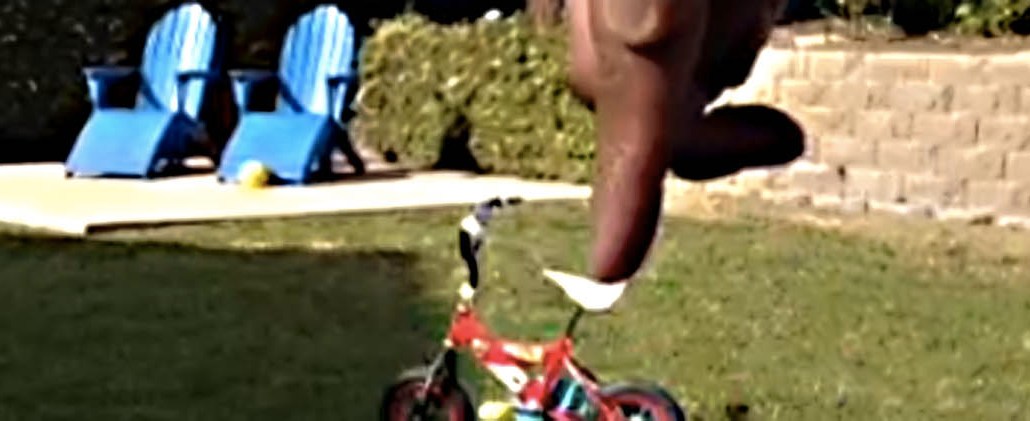
With adult brains only able to handle about eight seconds of focused attention, it’s no wonder that the six-second video app, Vine, has grown into something of a phenomenon. Brands, eager to be a part of the next big thing, are starting to shell out to talented folks who can tell captivating six-second stories.
Enter Jethro Ames, a freelance art director and Tribeca Film Fest #6SECFILMS winner. On his own Vine account, he puts together stop-motion videos that have attracted nearly 35,000 followers. He’s something of the Scorcese of Vine.
Ames has parlayed his popularity into a lucrative side business, working on six-second productions for companies like GE, Burt’s Bees, Comedy Central and The Coffee Bean. His videos often feature intricate and fanciful stop-motion animations that need multiple viewings to catch all the details.
Digiday spoke to Ames about his Vine oeuvre, why Instagram video wasn’t a Vine-killer, and how brands can work with the medium’s limitations.
How did you start Vining?
I actually started working with Vine as a fun side project. But after I won the Tribeca Film Fest and had a few articles written about my work, I got a lot of brand work. It got to the point where I had to choose between my art director day job and Vine freelancing, so I took a leap of faith and went completely freelance.
How did you come up with the winning concept for the Tribeca #6SECFILMS video?
I noticed a trend on Vine that people were using their hands to push things like apples and pillows on couches. I liked the trend, but I wanted to do something extraordinary. It wasn’t originally intended for Tribeca Film festival, but the video caught the judge’s eyes and ears. In the judge’s remarks, adding sound with the simplicity of the concept was what caught their attention.
How do you feel about Vine vs. Instagram video?
The six-second format pushes the creative limits in a way that 15 seconds doesn’t. The community for video watching is a lot stronger on Vine – they’re supportive and more engaging. And, even though brands kind of waited to see what would happen when Vine launched before jumping on the bandwagon, they’re jumping on now. Instagram video was exciting when it launched, but brands didn’t latch on. Even brands that have established followers don’t use Instagram video all that much. There’s also a lot power in the reVine and the retweet. And the six-second limit is enough time to keep the attention span of people watching.
What has been your most popular video? Why do you think that is?
If you’re just talking numbers, my most popular video is my Pacman video with almost 25,000 likes and 5,000 reVines.
Usually my Vines are inspired by the things that I enjoy. I have nostalgia for video games. The Pacman video result was unexpected for people, because I used crackers and Twizzlers and Milano cookies to illustrate the Pacman world. Most people just enjoyed how the sound matched up to the video.
What’s most difficult about Vine is the sound since you can’t do anything in postproduction.
Are brands unhappy that they can’t control the sound or other aspects of the video?
I’ve been using Vine for a while, and I’m pretty knowledgeable about what works and what doesn’t. I normally try to work with white noise. With white noise, there is a consistent tone that you use. I tell clients that, even though I’m using stop-motion to capture sounds, using white noise can still sound like a train or a crowd. If we’re using music, though, that’s difficult to control utilizing stop-motion. You can play the song, pause it, repeat, and hopefully combine the notes, so that it sounds like a normal song. But I try to stay away from that, as it’s pretty difficult to do. With the Burt’s Bees videos, stop-motion was not the answer to the audio. It had to work on camera, since the power of the concept came from the dialogue. Stop-motion was used minimally, and everything was done live to not interfere with the audio.
But brands that want to try Vine are usually brands willing to do something different and push themselves in the process.
What can Vine offer brands?
If you can tell a good story in six seconds, it’ll be successful. Brands are taking a chance hiring someone to use stop motion and create a different kind of content that they can’t normally get when paying for a high-price commercial. You can go into these high-priced productions and make the standard one-minute or 30-second commercial that people fast forward through or skip on YouTube. With Vine, it’s only six seconds, and you can easily scroll to the next one. But if it’s really good, users will watch it over and over again, and that’s really powerful for a brand message. Users will also share it with their friends and so forth.
Essentially, brands can create smart content without breaking their banks. The limitations push the brand to think about the story and focus mainly on the concept. If done right, users will engage and share.
More in Marketing

The Disney-OpenAI deal and generative AI copyright concerns
This week’s Digiday Podcast delves into the copyright concerns and potential trademark issues surrounding brands’ use of generative AI tools, with Davis Wright Tremaine partner Rob Driscoll.

‘There’s tremendous opportunity’: NBA sponsorships lead on European expansion
David Brody, vp, global partner management group lead at the NBA, explains its pitch to sponsor brands and how expansion isn’t far off.

New partnerships, marketing fuel BNPL’s holiday surge
This holiday season, more brands deployed BNPL services with different payment options beyond the more familiar “pay-in-four” structure.





